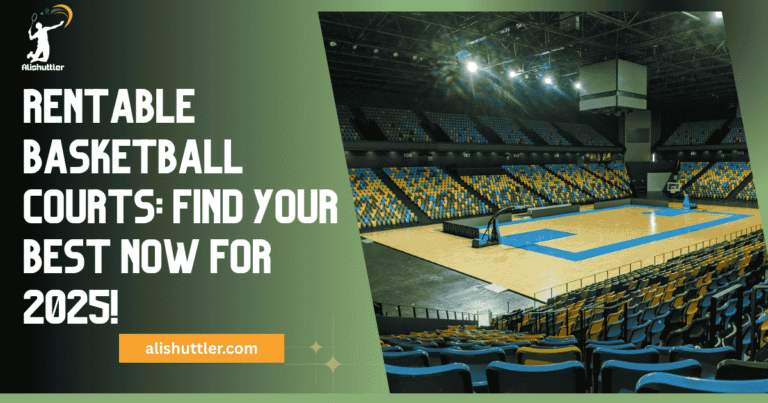Basketball Leagues are organized groups in which teams compete against one another according to a schedule, usually with regulations determined by a central committee or board.
From kids to pros, and different groups around the world, there are leagues for all. Most leagues go in seasons with playoffs and finals to determine a champion.
To learn more about how leagues work, the types of leagues there are, and how to join, read on for the rest of this post.

League Fundamentals
Basketball leagues these are official competitions with basketball teams competing and playing against one another in a schedule. These leagues provide organization to the sport and allow teams to measure themselves against others, including youth basketball players. They operate at various tiers, spanning youth and school teams, all the way to adult amateur and professional leagues.
Our primary objective is to provide an equitable venue for teams to participate, develop, and demonstrate great sportsmanship while battling for victory.
Leagues come in three categories. Professional leagues have elite teams with salaried players, and these tend to be the most popular and rule-bound, attracting massive crowds and extensive coverage. Semi-pro leagues are in the middle, where a handful of players receive a little pay, but many play for fun, acting as a transition for players looking to advance to the pro level.
Amateur leagues are the largest category. Think school leagues, competitive youth basketball leagues, and community teams. Most players join for enjoyment, fitness, and to learn the game. Regardless of the type, all leagues help maintain fairness and safety in the sport.
A transparent league configuration is essential for equitable competition and honorable conduct. Every league dictates eligibility, age or division of teams, and rules for the conduct of games. In most localities, they segment based on age or grade, such as 4th, 6th, 8th, and high school, ensuring tight and secure games for everyone.
Most leagues operate by seasons. For instance, a summer league typically has a minimum of 6 games per team, plus playoffs. The season might run from June to August, with games scheduled during the week and weekends. Certain leagues don’t play on specific holidays, like Passover or family days.
Pricing and structure vary by league. A basketball team could pay $1,000 to $1,150 to participate in a summer league. Some leagues even allow teams to choose between only games or games and practice times, typically concluding the season with playoffs and a final match to determine a champion.
Leagues do way more than just run games; they help players and communities in key ways, fostering skills and teamwork for the next level.
- Develop skills and team work through scheduled match play and training
- Provide youth players a road to advancement and more advanced play.
- Promote healthy living and regular exercise
- Offer a safe place for social ties and teamwork
- Bring people together, boosting local pride and support
The League Pyramid
The league pyramid in basketball is a hierarchy that divides teams and players according to ability, age and achievement. This pyramid isn’t just a chart, it directs how talent develops, provides a progression path, and allows teams to be promoted or relegated depending on outcomes. Each layer is focused on specific demographics and serves a distinct objective, ranging from educating fundamentals to highlighting world-class expertise.
The pyramid gives small clubs hope because even low division teams can come up and play at the summit. In most other countries, fans support their local teams regardless of what league they play in, so there are strong community connections. The pyramid differs globally too; certain nations employ rigid promotion and relegation guidelines, whereas others rely on playoffs or distinct configurations.
Table: Basketball League Pyramid Structure
| Tier | Age Group / Skill Level | Structure Highlights | Example Leagues |
|---|---|---|---|
| Professional | Adult/Elite | Highest level, global reach, no age limit | NBA, EuroLeague |
| Semi-Professional | Young Adult/Adult | Bridge tier, competitive, exposure to scouts | NBA G League, NBL1 |
| Collegiate | 18–24 | Education-linked, scholarships, high stakes | NCAA, U Sports |
| Youth | 6–18 | Skill growth, local to national events | AAU, Jr. NBA |
1. Youth
Youth basketball leagues are the bottom of the pyramid. They emphasize fundamentals such as dribbling, passing, and teamwork. These leagues are the initial source where kids absorb the game’s principles.
Local and national youth tournaments are key. They provide players an opportunity to challenge themselves and figure out how to deal with victory and defeat. For them, coaching and mentorship really matter. Coaches instruct more than basketball—they teach kids how to collaborate and develop as individuals.
When locals participate, local youth leagues improve. Local fan, parent and business support aids young players and imparts pride.
2. Collegiate
College basketball leagues such as the NCAA in the US act as a feeder for aspiring professional players. These leagues are incredibly competitive, with games attracting scouts and fans from across the globe. College hoops can transform a kid’s life, providing scholarships that assist with both athletically and academically.
Teamwork and sportsmanship are emphasized at this level. These values form players, instructing them on how to collaborate and manage stress. Many of the guys who turn it up here graduate to semi-pro or pro ball, so it remains a crucial connection in the pyramid.
3. Semi-Professional
Semi-pro leagues bridge the world of amateur and pro basketball. They allow players to continue growing while getting in front of scouts. The league is hard, and each match is an opportunity to shine.
Certain leagues, such as the NBA G League, have successfully vaulted numerous players to the NBA. This level is crucial as it leaves the door open for those who are late bloomers or require additional time to demonstrate their abilities.
4. Professional
At the pinnacle, we have the professional leagues. They provide the top tier of play, with teams and players from across the globe. Leagues such as the NBA and EuroLeague feature players from dozens of different countries, exemplifying basketball’s worldwide popularity.
Player salaries and sponsorship deals are key aspects of this level. There’s a lot of money on the line, and games are big spectacle events. Fans are a huge part of the scene, with great engagement in arenas and online.
Global Landscape
Basketball leagues exude genuine global diversity, particularly in the realm of competitive youth basketball leagues. Among them, the NBA has the greatest reach and pull in North America, attracting the best talent and audience from every continent. Each region has its own flavor of the game influenced by local rules, style, and culture, showcasing the unique skills of basketball teams.

In Europe, they each have their own leagues, such as the Euroleague basketball, which features top clubs competing at high levels. The BNXT League, crafted by Belgium and the Netherlands, unites clubs from both countries to raise the level of competition. Spain’s Liga ACB is highly skilled and has generated many players who end up in the NBA or other top leagues. In Asia, the CBA attracts huge attendance and star power, while Japan’s B.League and PBA garner passionate local fandom and cultivate distinct basketball identities. Elsewhere, in Africa and Latin America, new leagues and competitions are providing players with additional avenues to excel.
Basketball’s expansion has benefited enormously from the ability to share games and highlights easily on the internet. Social media and streaming have made it easy for fans in one country to follow games and players in another, enhancing the experience of youth basketball players worldwide. Players, coaches, and even referees now travel across borders more than ever.
Talent flows both ways: stars from Europe and Asia join the NBA, while American players take their skills to places like Spain, China, or Australia. This blend of different playing styles and philosophies keeps the game fresh and allows leagues to learn from each other. The global landscape for basketball translates into more opportunities for youngsters to develop, with new leagues like EBL and MBL emerging to bridge the divide and provide more folks a path to become professional.
International competitions are where the world’s elite convene, with FIBA, the sport’s world body, laying down the rules for play and organizing events such as the FIBA World Cup and Olympics. These events allow squads from various nations to compete and expand the game’s influence, showcasing great sportsmanship.
FIBA strives to ensure leagues adhere to common regulations, creating a feeling of ownership among players and fans. As basketball expands, innovative tech and concepts continue to transform gameplay and viewing, ensuring the sport remains cutting-edge and inclusive, particularly for junior basketball leagues across the globe.
Professional Tiers
Professional basketball leagues function in tiers. These tiers frequently reflect the talent, cash, and distribution of each league. At the pinnacle, leagues such as the NBA in the US and EuroLeague in Europe establish the standard. They attract elite talent, major sponsors and audiences globally.
Both leagues offer high pay, powerful media deals and provide players with international stardom. Their bar spans all the way game to player to team standards.
Underneath these are the second and third-tier leagues. In Japan, the B.League splits into three levels: Division One, Two, and Three. Teams can be promoted or relegated every year, depending on their final position. This system is transparent and incentivizes achievement, which aids in maintaining a competitive league.
In Russia – the PBL between 2008 and 2013 and then the VTB United League. Other countries, such as the Philippines and Uganda, have no formal tier system for pro basketball. For instance, Uganda’s NBL is the top league, but there is no information about lower levels publicly available. In Panama, the LPB is the premier, but again, not much on the others.
| League / Country | Top Tier | Lower Tiers | Promotion/Relegation | Pathways for Players |
|---|---|---|---|---|
| NBA / USA | NBA | NBA G League | No | Draft, G League |
| EuroLeague / Europe | EuroLeague | National Leagues (e.g., ACB) | Yes (in some cases) | Domestic, international |
| Japan | B.League Division One | Division Two, Three | Yes | Promotion/Relegation |
| NCAA / USA (College) | Division I | Division II, III | No | Scholarships, tryouts |
| Russia | VTB United League | Former PBL | No | Club recruitment |
| Uganda | National Basketball League | Not public | No | Club recruitment |
| Panama | LPB | Not public | No | Club recruitment |
The bottom or lower-tier leagues fight for money, media time and talent. They might have less fans, or smaller venues, or less support, so it is hard for teams to retain players or advance in skill. After all, these leagues are significant.
They provide homegrown prospects and youth players somewhere to develop. In Japan, a Division Three club that performs successfully can be promoted — providing both players and teams with something tangible to aim for.
For players, it’s the movement between tiers that matter. College basketball (NCAA) has its own tiers here in the US. Division I is top of the heap, with the most attention. Athletes will frequently utilize the minor leagues as a launching pad to D1 or to the professional level.
In pro leagues, some countries permit promotion and relegation, allowing teams to move between tiers. In others, player drafts, tryouts, or club recruiting provide entryways. The NBA’s G League is a wonderful example, serving as a bridge for players aspiring to make the NBA.
Grassroots Hoops
Grassroots hoops is where you plant the seeds for developing talent and defining the game’s future. These leagues, particularly the junior basketball leagues, are predominantly youth boys club teams ranging from 2nd grade to 8th grade, though a few events feature high school boys and girls divisions. Events occur all over in the Grind Region (TX, OK, AR, MO, KS, CO, WY), Grit Region (OH, IN, MI, WV, PA, KY, IL, TN), Hustle Region (CA, NV, AZ, UT, ID, OR, WA, MT, NM, CO), and Hard Work Region (MN, ND, SD, NE, IA, WI).
Because it’s so widespread, tons of kids can play, regardless of where they live. They’re held in fieldhouses, often, like Mishawaka Fieldhouse in Indiana, Farmers Bank Fieldhouse in Lebanon, and MSA Woodland Fieldhouse in Grand Rapids. These arenas are designed for competition and provide youth basketball players a great platform to showcase their talents in live action.
Certain grassroots events are even NCAA Certified, adhering to rigorous standards and allowing college scouts to identify emerging talent. Basketball teams participate in multiple events, and once their second qualifying event is completed, they are able to play in the Finals event in their region. This arrangement keeps the games competitive and drives kids to really put in the effort.
Grassroots hoops are all about fun and giving every player a decent opportunity. It’s not just about winning; it’s about building fundamental skills, learning teamwork, and having kids fall in love with the game. Many local programs and leagues, including competitive youth basketball clubs, help get more kids involved.
- Community youth leagues open to all skill levels
- After-school basketball clubs and open gym sessions
- Non-profit sports programs for underrepresented groups
- City-run recreational leagues for both boys and girls
- School-based leagues and teacher-run training groups
Youth camps and clinics play a huge role in grassroots hoops. These camps provide skill training, drills, and game play with coaches who understand how to instruct young players in an easy-to-understand manner. They learn how to dribble, shoot, pass, and play defense, all while making friends and learning good sportsmanship.
With most camps and clinics running during school breaks or weekends, they’re easy to participate in! Backing grassroots hoops is crucial. When parents, schools, and local groups support these leagues, they’re fostering strong, healthy communities that are connected. Competitions such as The Championship, which attracts more than 400 teams from dozens of countries every year, demonstrate how grassroots hoops can unite and leave an impact.
The circuit has been in operation since 2016 and continues to expand annually.
Beyond The Court
Basketball leagues extend beyond the hardwood, defining cultures and uniting individuals from diverse backgrounds. These competitive youth basketball leagues are a high impact factor in keeping the sport accessible for everyone to participate, regardless of their origin. Teams are usually formed with members from various backgrounds, allowing them to discover one another and develop trust. By advocating for fair play and respect, leagues establish a convention that could help tear down barriers between groups in much of the world.
Leagues begin initiatives that advocate for social justice and contribute back to communities. Most basketball teams have initiatives that educate children on nutrition, staying in school, or even mental health. Other players sign up for month or year-long mentoring programs, working one-on-one with students to ignite development and optimism. These experiences can be indelible and aid children in acquiring new skills or envisioning new trajectories for their lives, especially in the realm of youth basketball players.
Other leagues establish guidelines that rookies have to contribute, be it serving meals during the holidays or visiting elementary schools to address youth. These initiatives can be arranged around hectic schedules, so even players with jam-packed calendars can still contribute to their community. Players sometimes venture beyond their home towns for larger missions, participating in worldwide service excursions that distribute kindness and reflect the game’s worldwide impact.
These journeys forge connections between nations and present basketball as a global unifier. The effect is frequently enduring mentorship and service can inspire hope, instill teamwork, and forge lifetime friendships. Others leverage their stardom to draw attention to causes such as equality, poverty or education, demonstrating that their impact extends far beyond the court.
- How basketball builds teamwork and leadership off the court:
- Join players group projects such as food drives or school visits.
- They collaborate with peers from diverse experiences, discovering innovative approaches to challenges.
- Team environment learn how to be leader or follower, listen and collaborate on assignments.
- Mentoring aids them direct young ones and discover patience.
- Community work requires planning and timing skills, developing real-world strengths.
- Players and fans alike can encounter new friends and establish strong connections.
Fans can participate by rooting for hometown teams and attending events, such as charity matches or young camps. Participating brings groups together and ensures that all feel inclusion. Even minor things like attending a school game or passing along information about a local event can help teams and their cities succeed.

In other locations, fans and teams unite to raise money for causes or aid in times of need, pulling the connection between the sport and the people even tighter.
Final Thoughts
Basketball leagues unite people, develop talent and provide tangible avenues for advancement in sports. From neighborhood pick-up games to elite pro matchups, every tier welcomes fresh and experienced gamers alike. Kids who begin at the park or school gym can work their way up, join clubs or even pro teams in the big cities.
Leagues help fans connect, cheer and learn more about the game. Tales of underdog players who make it to the top levels demonstrate what can be achieved. To stay on top of league buzz, or to sample a league yourself, watch for updates from sports sites or local clubs. Stay curious, watch games and experience the action from wherever you are.
Frequently Asked Questions
What are the main types of basketball leagues?
These basketball leagues, including junior basketball leagues and professional leagues, could be professional, semi-professional, or amateur.
How are basketball leagues structured globally?
Every country has their own pyramid of leagues, including professional leagues, junior basketball leagues, and grassroots levels; players can move up or down depending on their skills and participation in competitive youth basketball leagues.
What is the purpose of grassroots basketball leagues?
Grassroots leagues focus on youth basketball players and community development, helping newcomers master the skills needed for competitive youth basketball leagues and future competitions.
How do professional basketball leagues differ from amateur leagues?
Pro leagues, such as the Euroleague and national leagues, have paid players and more intense competition, while amateur leagues focus on youth basketball players’ skills and great sportsmanship.
What role do basketball leagues play beyond the court?
Leagues, such as competitive youth basketball leagues, instill cooperation, self-control, and interpersonal abilities while promoting healthy living and community involvement.
Are there international basketball leagues?
Sure, there are international leagues all over like the EuroLeague, competitive basketball leagues, or the Basketball Africa League.
How can someone join a basketball league?
Interested youth basketball players can often participate by signing up with nearby clubs or community centers, as most competitive youth basketball leagues hold open tryouts or run youth programs.






